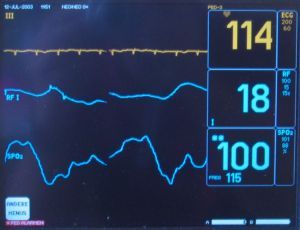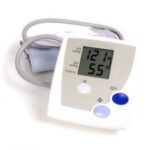It was a Friday morning in August when my husband announced that he wasn’t feeling well and was not going to work. He thought his blood pressure might be high. What he initially described was a tingling sensation in his head and some light pressure in his chest. Although tingling and chest pressure can be heart attack symptoms, they are symptoms he had experienced before, so they did not seem overly worrisome at first. These were reasons to be cautious and observant, but they not an occasions for alarm.
My husband called our longtime (now former) doctors to report his possible heart attack symptoms. They were too busy to see him. The doctor’s receptionist advised my husband to go to Safeway (yes, the grocery store) and test his own blood pressure with the coin-operated blood pressure cuff in the pharmacy. Fuming at this idiotic advice, I looked up the number of a local health clinic for him, but he hesitated over calling these strangers to discuss his possible heart attack symptoms and debated the merits of a health clinic versus an emergency room.
Suddenly, he said he was feeling worse, – the same symptoms but stronger – and he wanted me to drive him to the emergency room. I asked whether he was well enough, – whether we should be calling an ambulance. He said he thought it was OK to drive since he didn’t feel “that bad,” and the hospital is five minutes from our house. Because an extended family member was seriously ill at the time, I thought my husband was probably suffering from stress and did not think it likely he was actually having a heart attack.
Up to this point, my husband had not looked ill. But when he sat in the oversize rocking chair to put on his shoes, his face went gray, and he froze momentarily. I didn’t say anything to him then, but in looking back at all the heart attack symptoms he had, that is the defining one for me. The gray pallor raised a nagging doubt that this might be a bona fide emergency. Within a minute or so, though, his color returned.
In the emergency room, the nurse listened to my husband tell her all of his possible heart attack symptoms. She expressed concern over the pressure on his chest. At that point, he said it hadn’t been painful, just slightly uncomfortable. I mentioned the color draining from his face earlier. The nurse seemed to think that this observation was significant. She drew blood and called a technician to take an electrocardiogram (EKG). She gave him a nitroglycerin tablet to relax the blood vessels and increase the supply of blood and oxygen to the heart. Nothing showed up immediately suggesting that he had a heart attack, but the nurse said that the doctor would probably want my husband to remain in the hospital overnight.
During our long wait in the emergency room, my husband experienced stronger chest pressure. He described the pain as a 6 on a 1 to 10 scale. The pain was visible on his face and he broke out into a sweat. The pain looked higher than a 6 to me; if it were me, I think it would have gotten a higher rating. I fetched the nurse who confirmed his symptoms and then left us alone. This struck me as bizarre. If he was having a heart attack, shouldn’t the medical professionals be there doing… well, something. I didn’t know what exactly, but I found it discomforting to be left alone in the emergency room with my husband when he might actually be in the midst of a heart attack. Weren’t we at the hospital for this very reason, so the trained experts could do something about these potential heart attack symptoms?
Still the tests showed nothing amiss. The first set of blood work was normal but the doctor ordered a second set because sometimes it takes 12 hours or longer for the blood to reflect the changes caused by a heart attack.
There were a few times when my husband was quiet and obviously uncomfortable in the emergency room. Most of the time, we carried on normal conversation.
My husband was moved to a regular hospital room. We waited but nothing happened. The doctor in the emergency room had told us his first blood work was normal and the second set wasn’t back. Late Friday evening I went home; we still had no diagnosis. These possible heart attack symptoms might mean he’d actually had a heart attack or they could have been caused by stress or some other problem.
In the morning, my husband phoned me from the hospital. The doctor had come to see him and reported the results of that second blood test. My husband’s symptoms were no false alarm; he had had a heart attack.
The next step was an angiogram to check for artery blockage.
All day Saturday we waited for my husband to be taken to have the angiogram. The nurse didn’t know when it might happen. Finally, she told us it would not be until the following day.
On Sunday, we waited. Again no angiogram and no word. We pressed for information. Finally the angiogram was scheduled for Monday morning, three days after he came to the hospital with heart attack symptoms. After the angiogram, my husband underwent a cardiac catheterization. The procedure took longer than expected, and watching the clock, I was getting progressively worried. The cardiac catheterization was supposed to be finished a half hour ago, and I had no way of knowing why it was taking so long.
When the doctor finally came out of the operating room, he told me that my husband had had a 100% blockage in one of his arteries. During the procedure, the artery was opened and a stent inserted. A stent is a metal mesh sleeve that holds the vessel open to let the blood flow. At that moment, half of my husband’s heart was not working but this appeared to be the concussive effect of having had the heart attack. The doctor did not believe that my husband’s heart had suffered any permanent damage.
It has been 18 months since my husband woke up experiencing heart attack symptoms. Although he has had similar heart attack symptoms a few times since them, thankfully they were false alarms.





